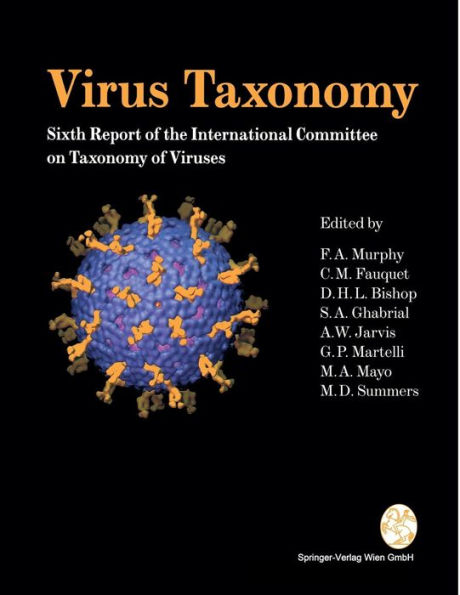Rapid developments continue to take place in the research of viruses, the causative agents of infectious diseases in humans, animals, plants, invertebrates, protozoa, fungi, and bacteria. A still growing number of more than 30,000 viruses, virus strains, and subtypes are being tracked in various specialty laboratories and culture collections. In this situation of expansion and specialization, the International Committee on Taxonomy of Viruses was founded to establish, refine and maintain a universal virus taxonomy system giving information to virologists about the characteristics of the different groups of viruses.
The Committee’s Sixth Report includes one order, 71 families, 11 subfamilies, and 175 genera and more than 4,000 member viruses. On 600 printed pages large amounts of molecular biologic data, illustrated by micrographs and virion diagrams, gene maps and tables give a comprehensive overview and prove helpful in teaching, in diagnostics, in scholarly research, and in the practical areas of medicine, veterinary medicine, plant pathology, insect pest management, and biotechnology.
"... est une référence indispensable pour les chercheurs, les enseignants, les médecins ou les vétérinaires mais aussi pour les étudiants et d’une manière générale pour toutes les personnes intéressées par la virologie”. Revue de Médecine Vétérinaire
"... an excellent, well presented and informative volume. The report should be an essential reference volume for any department or organization involved in the study of viruses”. Quarterly
Rapid developments continue to take place in the research of viruses, the causative agents of infectious diseases in humans, animals, plants, invertebrates, protozoa, fungi, and bacteria. A still growing number of more than 30,000 viruses, virus strains, and subtypes are being tracked in various specialty laboratories and culture collections. In this situation of expansion and specialization, the International Committee on Taxonomy of Viruses was founded to establish, refine and maintain a universal virus taxonomy system giving information to virologists about the characteristics of the different groups of viruses.
The Committee’s Sixth Report includes one order, 71 families, 11 subfamilies, and 175 genera and more than 4,000 member viruses. On 600 printed pages large amounts of molecular biologic data, illustrated by micrographs and virion diagrams, gene maps and tables give a comprehensive overview and prove helpful in teaching, in diagnostics, in scholarly research, and in the practical areas of medicine, veterinary medicine, plant pathology, insect pest management, and biotechnology.
"... est une référence indispensable pour les chercheurs, les enseignants, les médecins ou les vétérinaires mais aussi pour les étudiants et d’une manière générale pour toutes les personnes intéressées par la virologie”. Revue de Médecine Vétérinaire
"... an excellent, well presented and informative volume. The report should be an essential reference volume for any department or organization involved in the study of viruses”. Quarterly

Virus Taxonomy: Classification and Nomenclature of Viruses
586
Virus Taxonomy: Classification and Nomenclature of Viruses
586Paperback(Softcover reprint of the original 1st ed. 1995)

Product Details
| ISBN-13: | 9783211825945 |
|---|---|
| Publisher: | Springer Vienna |
| Publication date: | 04/19/2002 |
| Series: | Archives of Virology. Supplementa , #10 |
| Edition description: | Softcover reprint of the original 1st ed. 1995 |
| Pages: | 586 |
| Product dimensions: | 8.27(w) x 11.02(h) x (d) |
